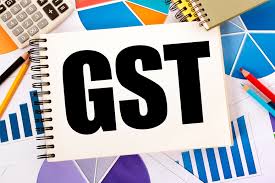PF Rule Change: Soon, you will have 2 PF Accounts. How EPF Will Be Calculated
The Central Board of Direct Taxes (CBDT) had recently announced a new set of rules regarding the taxation on the interest for the excess of Employee Provident Fund (EPF) contributions. As per the new set of guidelines, if an individual’s EPF contribution goes above Rs 2.5 lakh in a given financial year, they will need to have two separate Provident Fund (PF) accounts. This is effective from the beginning of this fiscal FY2021-22. These new regulations were introduced following the introduction of a new set of provisions in Budget 2021. These new sets of regulations were bracketed under the Income-tax (25th Amendment) Rules, 2021.
The two accounts that are to be maintained are to have taxable and non-taxable contributions separately. This has been put in place in order to ensure the streamlined facilitation of calculations for the taxpayer. The CBDT announced in a notice that this would come into effect on April 1, 2022, which means that the tax earned on the excess contributions for FY2021-22 would be payable by you and it will require you to declare it in your following income tax return filing next year.
The CBDT said in the notice, “For the purposes of the first and second provisos to clauses (11) and (12) of section 10, income by way of interest accrued during the previous year which is not exempt from inclusion in the total income of a person under the said clauses (hereinafter in this rule referred to as the taxable interest), shall be computed as the interest accrued during the previous year in the taxable contribution account.”
“For the purpose of calculation of taxable interest under sub-rule (1), separate accounts within the provident fund account shall be maintained during the previous year 2021-2022 and all subsequent previous years for taxable contribution and non-taxable contribution made by a person,” added the CBDT.
As per the notification specifying that these fresh guidelines will kick in from the beginning of this fiscal, all the contributions that were made up until March 31, 2021, are to be c
onsidered non-taxable. If the account does not have any employer contributions, then the limit would be set at Rs 5 lakh for the PF.
The CBDT added, “For the purposes of this rule, non-taxable contribution account shall be the aggregate of the closing balance in the account as on 31st day of March 2021, any contribution made by the person in the account during the previous year 2021-2022 and subsequent previous years, which is not included in the taxable contribution account and accrued interest.”
The entity said that the tax to be paid will be calculated after the withdrawals made from the taxable account were deducted. It should also be noted that the Rs 2.5 lakh limit applies to non-governmental employees, the Rs 5 lakh limit on the other hand is for government employees.
The previous budget announcement in February 2021, did not provide any clarity regarding how the taxable income would be calculated. Neither did it expand upon how it would be separated from the non-taxable contributions. In that regard, this rule change comes as a clarification on the previous session.
Lokesh Shah, Partner at Saraf & Partners said, “Exemption available on interest accrued in recognized / statutory Provident Fund was withdrawn by Finance Act, 2021, in respect of contribution in excess of Rs. 250,000. Rule 9D notified by CBDT provides clarity on manner of computation of interest on such excess contribution.”
“By prescribing two separate accounts, Taxable Contribution Account and Non-Taxable Contribution Account, the manner in which taxable interest is to be computed is simplified. In effect, interest accrued on excess contribution during financial year ending March 31, 2022, or subsequent years, will all form part of Taxable Contribution Account. Taxable interest will thereafter be computed on aggregate amount in Taxable Contribution Account,” he added.
Download our App to get knowledge updates: https://play.google.com/store/apps/details?id=com.app.gstmitra




Comments
Post a Comment